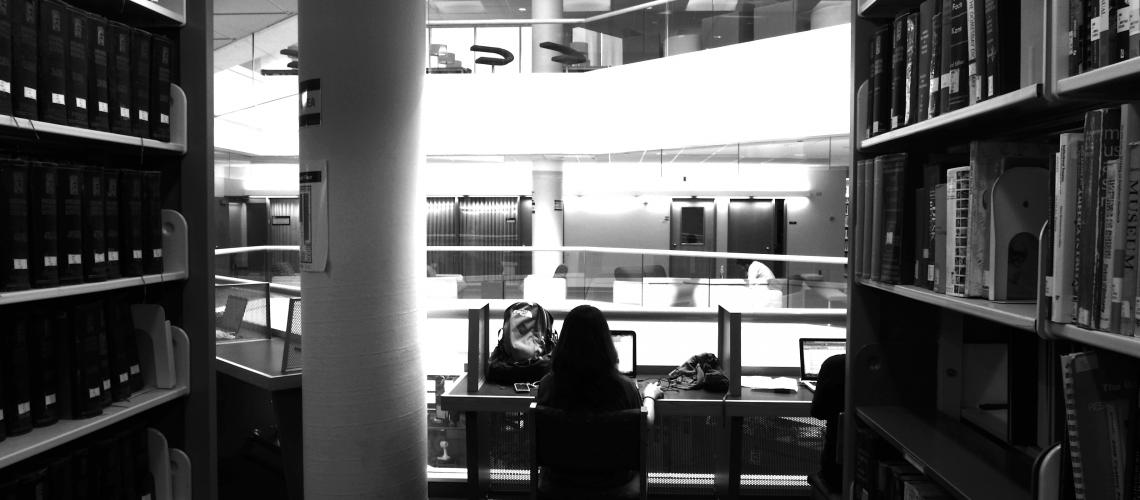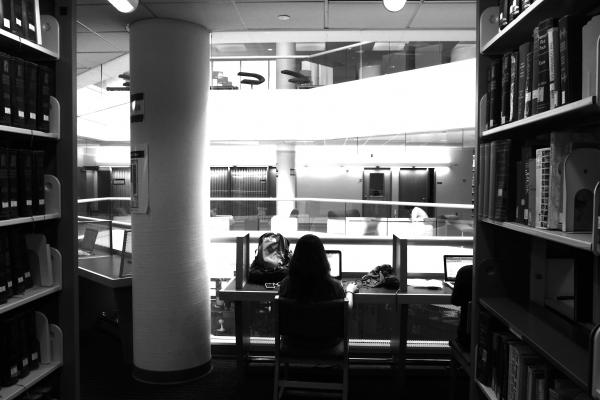The Evolution of Drexel’s Academic Program in the 20th Century
Part of
Over the course of the twentieth century, the academic program of the Institute grew to comprise an array of coeducational undergraduate and graduate programs in engineering, science, and technology, with engineering as the flagship discipline.
The evolution of Drexel’s academic program in the 20th century was marked each decade by one or more important developments, the first being the awarding of B.S. degrees in the 1910s and the prominence accorded engineering studies. The 1920s and 1930s saw the growth of the Institute’s path-breaking cooperative (“co-op”) program and the awarding of M.S. degrees. The 1940s witnessed the enrollment of the first class of women engineers and an emphasis on science studies in the undergraduate programs. The 1950s saw the expansion of laboratories and the introduction of graduate programs in the sciences. The 1960s were marked by the introduction of Ph.D. studies, followed by the Institute’s designation by the Commonwealth of Pennsylvania as Drexel University. The 1980s saw the introduction of personal computers, followed in the 1990s by the Internet; the latter decade saw the creation of the College of Arts and Sciences.
- Between 1913 and 1917, the Drexel Institute began awarding B.S. degrees in four schools—Engineering, Domestic Science and Arts (later Home Economics), Secretarial (later Business Administration), and the Evening School. Located on the east flank of Main Building, two new buildings, Randall Hall and Curtis Hall, designed by Wilson Brothers, allowed for an expanded curriculum, from basic instruction to degree granting programs. Engineering was the flagship school.[1]
- In 1919, Drexel inaugurated its path-breaking cooperative (“co-op”) program to train “generalist engineers” who would be planners of industrial systems and well-versed in the principles of scientific management propounded by the nation’s leading industrial thinker, Frederick W. Taylor. Between the 1920s and World War II, engineering co-op students found placements at major industries such as Honeywell, Bell, RCA, Bethlehem Steel, Link Belt, General Electric, Westinghouse—and, during the Great Depression, at New Deal agencies such as the Tennessee Valley Authority and the U.S. Bureau of Reclamation. These credit-bearing apprenticeships enabled Drexel students to earn money to help pay their tuition. For the remainder of the century, the co-op program would stand as the hallmark of a Drexel engineering education.[2]
- In 1927, Drexel began awarding M.S. degrees in engineering, library science, and home economics, among other fields.
- In the Great Depression, Drexel experienced a reversal of fortune, its previous growth now stymied. Renamed the Drexel Institute of Technology in 1936, it was rescued in 1943 by a windfall from the estate of the late Anthony Drexel’s son George Childs Drexel.[3]
- In 1943, Drexel enrolled its first class of women engineers, a total of seventeen, who formed “an academic and social club” that would grow to become the National Society for Women Engineers in 1949 (as of 2017, Drexel’s chapter counted approximately 130 members).[4] Drexel would also be known as a haven for women’s education in its schools of business and library science.
- Up to and beyond World War II, Drexel emphasized undergraduate courses in the sciences as foundational for engineering studies; by the end of the war, chemistry had the most listings in Drexel’s catalog.
- In the 1950s, an expansion of laboratories in chemistry, physics, and biology enabled the Institute to add graduate studies to the science curriculum, with physics as the leading field of study. Between 1965 and 1966, the Commonwealth of Pennsylvania authorized the Institute to award Ph.D. degrees in physics, chemistry, and several engineering fields. An array of specialized undergraduate and graduate studies in the natural sciences was introduced in the 1960s; the College of Science was established in 1968. By the end of the decade, doctorates in biology and library science had been added to Drexel’s curriculum. In 1970, the Commonwealth of Pennsylvania accorded the Institute university status—henceforth Drexel was Drexel University.[5]
- Increasingly in the post-war decades, Drexel emphasized the humanities, the social sciences, and mathematics and computer science. Some highlights:
- Benefitting from a 1984 partnership with the Apple Corporation, Drexel was “the first university in the world to require students to use microcomputers.”
- Drexel students would purchase Macintosh personal computers at a discount, with access to campus printers.[6]
- In the mid-1980s, Drexel opened the Center for Scientific Computation, “a multidisciplinary graduate research facility.”
- The year 1990 saw the merger of the College of Science and the College of Humanities and Social Sciences to form the College of Arts and Sciences.[7]




